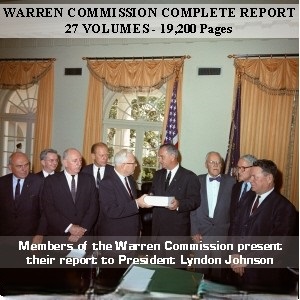
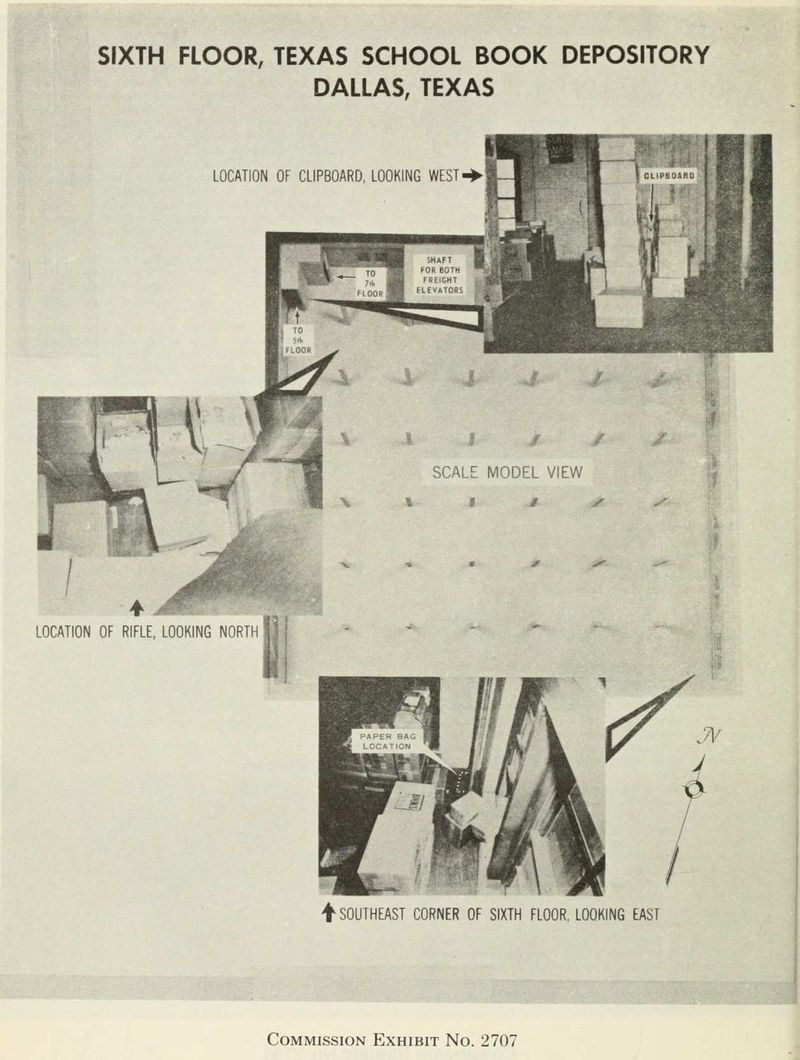
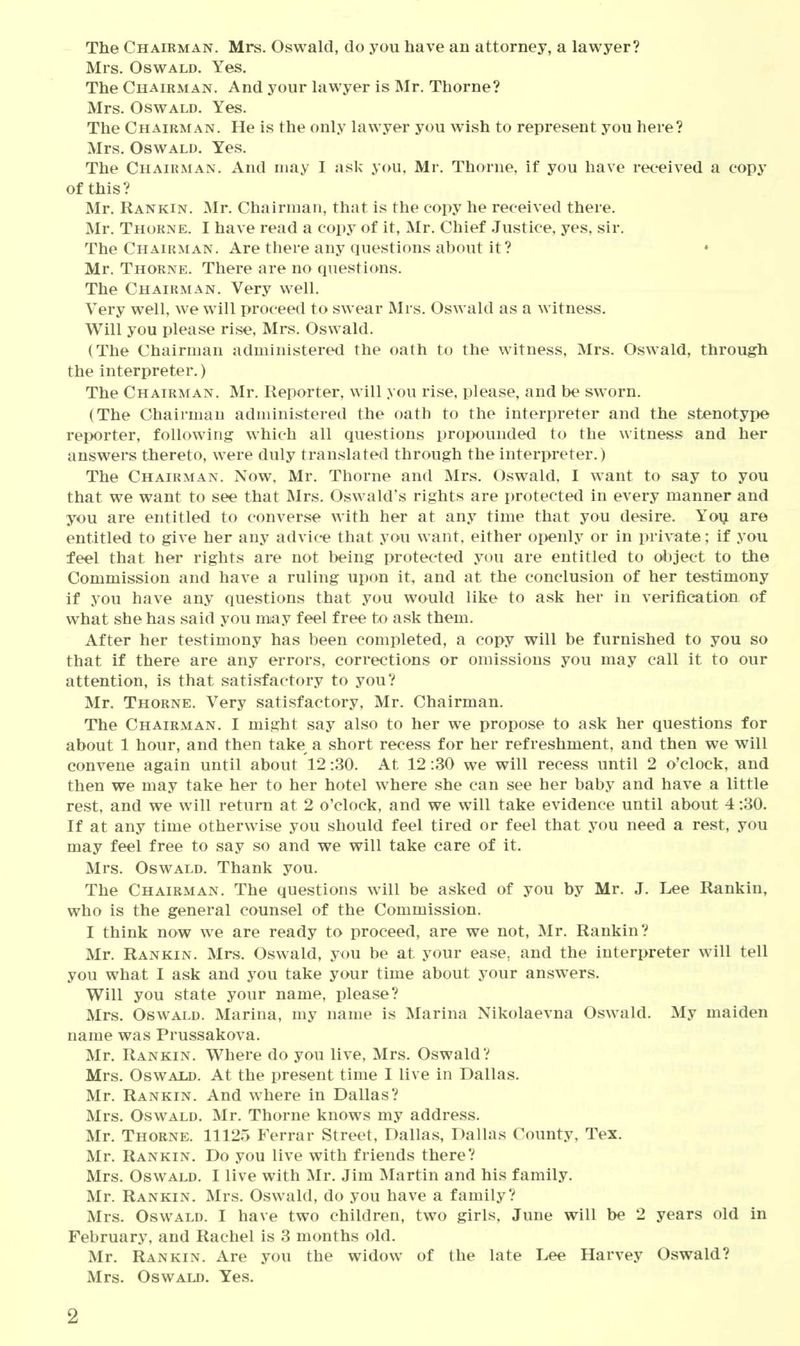
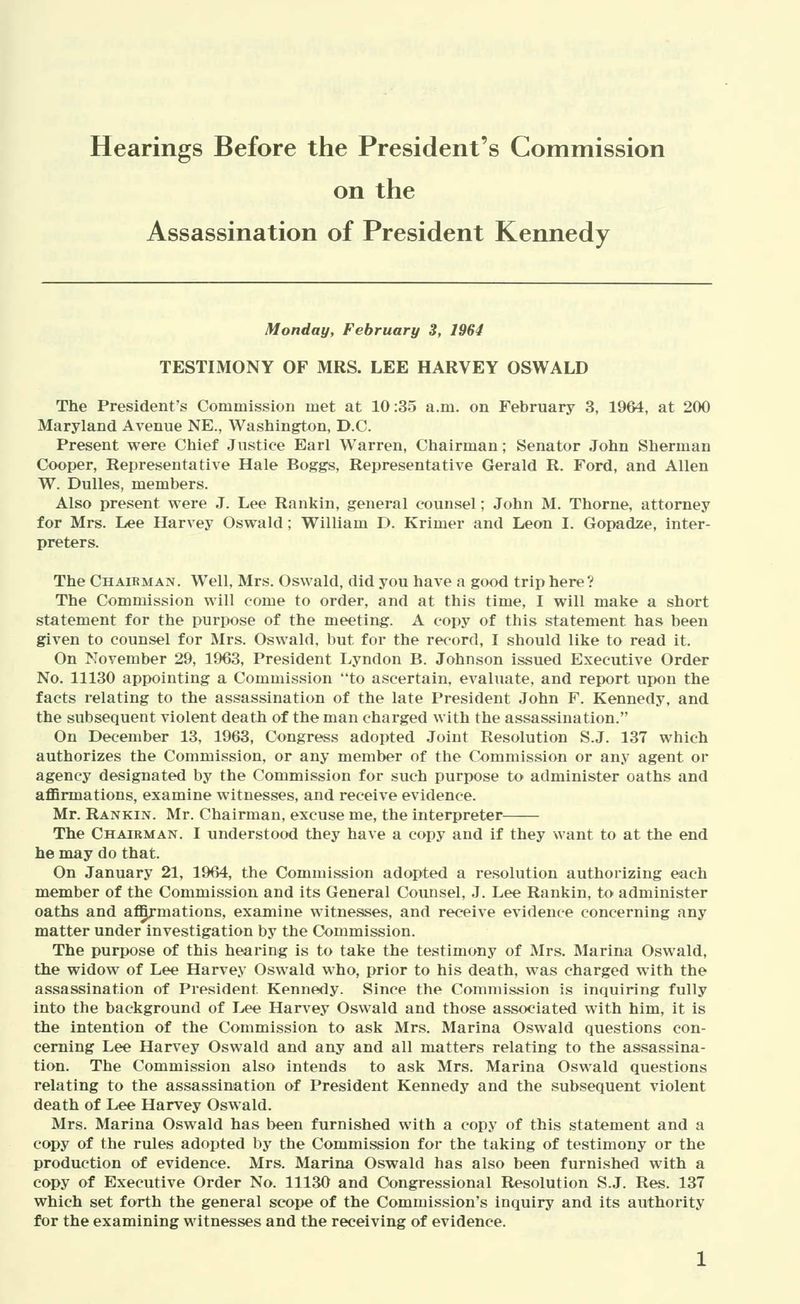
Warren Commission Report: 27 volumes, 19,200 pages
$19.50
Description
Warren Commission Report: Summary and Context
Timeline of Main Events Related to the Warren Commission
- November 22, 1963: President John F. Kennedy is assassinated in Dallas, Texas. Texas Governor John Connally is also wounded.
- November 22, 1963 (later): Lee Harvey Oswald is arrested for the assassination of President Kennedy.
- November 24, 1963: Lee Harvey Oswald is shot and killed by Jack Ruby while in police custody during a planned transfer.
- November 29, 1963: President Lyndon B. Johnson issues Executive Order 11130, establishing the President’s Commission on the Assassination of President Kennedy, commonly known as the Warren Commission. The Commission is tasked with investigating the assassination of President Kennedy and the subsequent killing of Lee Harvey Oswald, and to report its findings to the President.
- December 13, 1963: The U.S. Congress passes Senate Joint Resolution 137 (Public Law 88-202), granting the Warren Commission the authority to subpoena witnesses and obtain evidence, and to compel testimony with immunity (though the Commission did not ultimately grant immunity to any witness).
- December 16, 1963: J. Lee Rankin is sworn in as the General Counsel for the Warren Commission.
- 1963 – 1964: The Warren Commission conducts its investigation, which includes:
- Reviewing reports from the FBI, Secret Service, Department of State, and the Attorney General of Texas.
- Requesting additional information from federal agencies, Congressional committees, and state and local experts.
- Holding hearings and taking testimony from 552 witnesses in Washington D.C., Dallas, New Orleans, and other locations.
- Visiting the assassination scene and other relevant locations in Dallas.
- September 24, 1964: The Warren Commission presents its Report to President Johnson. All members of the Commission concur with the findings. The Report concludes that Lee Harvey Oswald acted alone in the assassination of President Kennedy and the wounding of Governor Connally, and that Jack Ruby acted alone in the killing of Oswald.
- Following September 24, 1964: The 26 volumes of the Warren Commission’s Hearings and Exhibits are published.
- Post-Publication: The Warren Commission transfers its records to the National Archives for permanent preservation.
- 1978: The United States House of Representatives Select Committee on Assassinations (HSCA) releases its report, which reviews the work of the Warren Commission. The HSCA report finds that the Warren Commission conducted a thorough investigation into Oswald’s responsibility but failed to adequately investigate the possibility of a conspiracy. The HSCA also states that this deficiency was partly due to the Commission not receiving all relevant information from other government agencies and that the Warren Commission arrived at its conclusions in good faith based on the available evidence, but presented those conclusions too definitively.
Cast of Characters
- John F. Kennedy: The 35th President of the United States, assassinated on November 22, 1963, in Dallas, Texas.
- Lyndon B. Johnson: The Vice President who became the 36th President of the United States following Kennedy’s assassination. He appointed the Warren Commission to investigate the events.
- Earl Warren: Chief Justice of the United States, former Governor and Attorney General of California. He served as the Chairman of the President’s Commission on the Assassination of President Kennedy (the Warren Commission).
- Richard B. Russell: Democratic Senator from Georgia and chairman of the Senate Armed Services Committee, former Governor of Georgia, and county attorney in that state. Served as a member of the Warren Commission.
- John Sherman Cooper: Republican Senator from Kentucky, former county and circuit judge in Kentucky, and United States Ambassador to India. Served as a member of the Warren Commission.
- Hale Boggs: Democratic Representative from Louisiana and House Majority Whip. Served as a member of the Warren Commission.
- Gerald R. Ford: Republican Representative from Michigan and chairman of the House Republican Conference. Served as a member of the Warren Commission.
- Allen W. Dulles: Lawyer and former Director of the Central Intelligence Agency (CIA). Served as a member of the Warren Commission.
- John J. McCloy: Lawyer, former President of the International Bank for Reconstruction and Development (World Bank), and former United States High Commissioner for Germany. Served as a member of the Warren Commission.
- J. Lee Rankin: Former Solicitor General of the United States. Served as the General Counsel for the Warren Commission, leading the legal staff in the investigation.
- Lee Harvey Oswald: Alleged assassin of President John F. Kennedy. He was arrested shortly after the assassination and was himself killed two days later by Jack Ruby. The Warren Commission concluded that he acted alone.
- Jack Ruby: Dallas nightclub owner who shot and killed Lee Harvey Oswald on November 24, 1963, while Oswald was in police custody. The Warren Commission concluded that he acted alone.
- John Connally: Governor of Texas who was riding in the same limousine as President Kennedy and was also wounded during the assassination.
- Marina Oswald: Wife of Lee Harvey Oswald. Her testimony was part of the Warren Commission’s investigation (Volume I of the Hearings).
- Marguerite Oswald: Mother of Lee Harvey Oswald. Her testimony was part of the Warren Commission’s investigation (Volume I of the Hearings).
- Robert Edward Lee Oswald: Brother of Lee Harvey Oswald. His testimony was part of the Warren Commission’s investigation (Volume I of the Hearings).
- James Herbert Martin: Acted briefly as Marina Oswald’s business manager. Testified before the Warren Commission (Volumes I and II of the Hearings).
- Mark Lane: New York attorney who testified before the Warren Commission (Volume II of the Hearings).
- William Robert Greer: The Secret Service agent who was driving President Kennedy’s limousine at the time of the assassination. Testified before the Warren Commission (Volume II of the Hearings).
- Ruth Hyde Paine: An acquaintance of Lee Harvey Oswald and his wife. Testified before the Warren Commission (Volumes III and IX of the Hearings).
- Howard Leslie Brennan: A witness who was present at the assassination scene. Testified before the Warren Commission (Volume III of the Hearings).
- Sebastian F. Latona: Fingerprint expert with the Federal Bureau of Investigation (FBI). Testified before the Warren Commission (Volume IV of the Hearings).
- Arthur Mandella: Fingerprint expert with the New York City Police Department. Testified before the Warren Commission (Volume IV of the Hearings).
- Winston G. Lawson: Secret Service agent who worked on advance preparations for the President’s trip to Dallas. Testified before the Warren Commission (Volume IV of the Hearings).
- Alwyn Cole: Questioned document examiner with the Treasury Department. Testified before the Warren Commission (Volume IV of the Hearings).
- John W. Fain, John Lester Quigley, James Patrick Hosty, Jr.: Agents of the FBI who interviewed Oswald or people connected with him. Testified before the Warren Commission (Volume IV of the Hearings).
- Alan H. Belmont: Assistant to the Director of the FBI. Testified before the Warren Commission (Volume V of the Hearings).
- Jack Revill, V. J. Brian: Dallas police officers who testified concerning conversations with FBI agent James Patrick Hosty, Jr. (Volume V of the Hearings).
- Robert A. Frazier: Firearms expert with the FBI. Testified before the Warren Commission (Volume V of the Hearings).
- Drs. Alfred Olivier, Arthur Dziemian, Frederick W. Light, Jr.: Wound ballistics experts with the U.S. Army laboratories. Testified before the Warren Commission (Volume V of the Hearings).
- J. Edgar Hoover: Director of the Federal Bureau of Investigation (FBI). Testified before the Warren Commission (Volume V of the Hearings).
- Drs. Charles J. Carrico, Malcolm Oliver Perry, William Kemp Clark, Robert Nelson McClelland, Charles Rufus Baxter, Marion Thomas Jenkins, Ronald Coy Jones, Don Teel Curtis, Fouad A. Bashour, Gene Coleman Akin, Paul Conrad Peters, Adolph Hartung Giesecke, Jr., Jackie Hansen Hunt, Kenneth Everett Salyer, Martin G. White: Doctors who attended President Kennedy at Parkland Hospital. Testified before the Warren Commission (Volumes VI and VII of the Hearings).
- Edward Voebel, William E. Wulf, Bennierita Smith, Frederick S. O’Sullivan, Mildred Sawyer, Anne Boudreaux, Viola Peterman, Myrtle Evans, Julian Evans, Philip Eugene Vinson, Hiram Conway: Individuals associated with Lee Harvey Oswald in his youth. Testified before the Warren Commission (Volume VIII of the Hearings).
- Lillian Murret, Marilyn Dorothea Murret, Charles Murret, John M. Murret, Edward John Pic, Jr.: Relatives of Lee Harvey Oswald. Testified before the Warren Commission (Volume VIII of the Hearings).
- Paul M. Raigorodsky, Natalie Ray, Thomas M. Ray, Samuel B. Ballen, Lydia Dymitruk, Gary E. Taylor, Ilya A. Mamantov, Dorothy Gravitis, Paul Roderick Gregory, Helen Leslie, George S. De Mohrenschildt, Jeanne De Mohrenschildt: Individuals who became acquainted with Lee Harvey Oswald and/or his wife after their return to Texas in 1962. Testified before the Warren Commission (Volume IX of the Hearings).
- Everett D. Glover: Became acquainted with Lee Harvey Oswald after his return to Texas. Testified before the Warren Commission (Volume X of the Hearings).
- Carlos Bringuier, Francis L. Martello, Charles Hall Steele, Jr., Charles Hall Steele, Sr., Philip Geraci III, Vance Blalock, Vincent T. Lee, Arnold Samuel Johnson, James J. Tormey, Farrell Dobbs, John J. Abt: Testified concerning Oswald’s political activities and associations. Testified before the Warren Commission (Volume X of the Hearings).
- John Edward Pic: Lee Harvey Oswald’s half-brother. Testified before the Warren Commission (Volume XI of the Hearings).
- Kerry Wendell Thornley: A Marine Corps acquaintance of Oswald. Testified before the Warren Commission (Volume XI of the Hearings).
- L. C. Graves, James Robert Leavelle, L. D. Montgomery, Thomas Donald McMillon, Forrest V. Sorrels: Participated in the arrest and questioning of Jack Ruby. Testified before the Warren Commission (Volumes XII and XIII of the Hearings).
- Dr. Fred A. Bieberdorf, Frances Cason, Michael Hardin, C. E. Hulse: Testified concerning the time at which Lee Harvey Oswald was shot. Testified before the Warren Commission (Volume XIII of the Hearings).
- Curtis LaVerne Crafard, Wilbyrn Waldon (Robert) Litchfield II, Robert Carl Patterson, Alice Reaves Nichols, Ralph Paul, George Senator, Nancy Perrin Rich, Breck Wall (Billy Ray Wilson), Joseph Alexander Peterson, Harry N. Olsen, Kay Helen Olsen: Friends, acquaintances, employees, or business associates of Jack L. Ruby. Testified before the Warren Commission (Volume XIV of the Hearings).
- Earl Ruby, Sam Ruby, Mrs. Eva Grant: Siblings of Jack L. Ruby. Testified before the Warren Commission (Volume XIV of the Hearings).
- Dr. William Robert Beavers: Psychiatrist who examined Jack Ruby. Testified before the Warren Commission (Volume XIV of the Hearings).
- Bell P. Herndon: FBI polygraph expert who administered a polygraph test to Ruby. Testified before the Warren Commission (Volume XIV of the Hearings).
- Hyman Rubenstein: Brother of Jack L. Ruby. Testified before the Warren Commission (Volume XV of the Hearings).
- Glen D. King: Administrative assistant to the chief of the Dallas police. Testified before the Warren Commission (Volume XV of the Hearings).
- C. Ray Hall: FBI agent who interviewed Ruby. Testified before the Warren Commission (Volume XV of the Hearings).
- Charles Batchelor, Jesse E. Curry, M. W. Stevenson: Officials of the Dallas Police Department. Testified before the Warren Commission (Volume XV of the Hearings).
Warren Commission Complete Report, Hearings, and Exhibits 27 Volumes – 19,200 pages
President John F. Kennedy Assassination: Warren Commission Complete Report: Report, Hearings, and Exhibits 27 Volumes – 19,200 pages
The 19,200 pages composed of The Report of the President’s Commission on the Assassination of President Kennedy, also known as the Warren Commission Report in one volume, and 26 volumes of hearings, interviews and exhibits.
President Lyndon B. Johnson appointed the President’s Commission on the Assassination of President Kennedy, commonly called the Warren Commission, by Executive Order (E.O. 11130) on November 29, 1963. Its purpose was to investigate the assassination of President John Fitzgerald Kennedy on November 22, 1963, at Dallas, Texas. President Johnson directed the Commission to evaluate matters relating to the assassination and the subsequent killing of the alleged assassin, and to report its findings and conclusions to him.
The following members served on the Commission:
Earl Warren, Chief Justice of the United States, former Governor and attorney general of California, Chair;
Richard B. Russell, Democratic Senator from Georgia and chairman of the Senate Armed Services Committee, former Governor of Georgia, and county attorney in that State;
John Sherman Cooper, Republican Senator from Kentucky, former county and circuit judge in Kentucky, and United States Ambassador to India;
Hale Boggs, Democratic Representative from Louisiana and majority whip in the House of Representatives;
Gerald R. Ford, Republican Representative from Michigan and chairman of the House Republican Conference;
Allen W. Dulles, lawyer and former Director of the Central Intelligence Agency;
John J. McCloy, lawyer, former President of the International Bank for Reconstruction and Development, and former United States High Commissioner for Germany.
On December 13, 1963, Congress passed Senate Joint Resolution 137 (Public Law 88-202) authorizing the Commission to subpoena witnesses and obtain evidence concerning any matter relating to the investigation. The resolution also gave the Commission the power to compel the testimony of witnesses by granting immunity from prosecution to witnesses testifying under compulsion. The Commission, however, did not grant immunity to any witness during the investigation.
The Commission acted promptly to obtain a staff to meet its needs. J. Lee Rankin, former Solicitor General of the United States, was sworn in as general counsel for the Commission on December 16, 1963. He was aided in his work by 14 assistant counsels who were divided into teams to deal with the various subject areas of the investigation. The Commission was also assisted by lawyers, Internal Revenue Service agents, a senior historian, an editor, and secretarial and administrative personnel who were assigned to the Commission by Federal agencies at its request. Officials and agencies of the state of Texas, as well as of the Federal Government, cooperated with the Commission on its work.
The Commission reviewed reports by the Federal Bureau of Investigation, Secret Service, Department of State, and the Attorney General of Texas, and then requested additional information from federal agencies, Congressional committees, and state and local experts. The Commission held hearings and took the testimony of 552 witnesses. On several occasions, the Commission went to Dallas to visit the scene of the assassination and other places.
The Commission presented its Report, in which each member concurred, to President Johnson on September 24, 1964. The publication of the Report was soon followed by the publication of the 26 volumes of the Commission’s Hearings. The Commission then transferred its records to the National Archives to be permanently preserved under the rules and regulations of the National Archives and applicable federal law.
The Commission concluded that Lee Harvey Oswald acted alone in killing Kennedy and wounding Texas Governor John Connally and that Jack Ruby also acted alone when he killed Oswald a few days later.
In 1978 the United States House of Representatives Select Committee on Assassinations released its report. The report made conclusions about the work of the President’s Commission on the Assassination of President John F. Kennedy (Warren Commission). It reported that it found that: The Warren Commission performed with varying degrees of competency in the fulfillment of its duties. The Warren Commission conducted a thorough and professional investigation into the responsibility of Lee Harvey Oswald for the assassination. The Warren Commission failed to investigate adequately the possibility of a conspiracy to assassinate the President. This deficiency was attributable in part to the failure of the Commission to receive all the relevant information that was in the possession of other agencies and departments of the Government. The Warren Commission arrived at its conclusions, based on the evidence available to it, in good faith. The Warren Commission presented the conclusions in its report in a fashion that was too definitive.
Source: National Archives and Records Administration
Scope and Content
The main report is 912 pages in a single volume. The following 26 volumes are, Volumes 1 to 5, hearings conducted by the Warren Commission in Washington DC. Volumes 6 to 15, hearings conducted by staff attorneys on location in Dallas, New Orleans, and other locations. Volume 15 contains an index to names and the exhibits. Volumes 16 to 26 contain photographed Commission Exhibits.
The main report, “The Report of the President’s Commission on the Assassination of President Kennedy,” contents are:
Title Page, Commission Members, Transmittal Letter
Foreword
Chapter 1: Summary and Conclusions
Chapter 2: The Assassination
Chapter 3: The Shots from the Texas School Book Depository
Chapter 4: The Assassin
Chapter 5: Detention and Death of Oswald
Chapter 6: Investigation of Possible Conspiracy
Chapter 7: Lee Harvey Oswald: Background and Possible Motives
Chapter 8: The Protection of the President
Appendix 1: Press Release Announcing Appointment of Commission
Appendix 2: Press Release Announcing Appointment of Commission
Appendix 3: Pub. Law 88-202
Appendix 4: Biographical Information and Acknowledgments
Appendix 5: List of Witnesses
Appendix 6: Commission Procedures for the Taking of Testimony
Appendix 7: A Brief History of Presidential Protection
Appendix 8: Medical Reports from Doctors at Parkland Memorial Hospital, Dallas, Tex.
Appendix 9: Autopsy Report and Supplemental Report
Appendix 10: Expert Testimony
Appendix 11: Reports Relating to the Interrogation of Lee Harvey Oswald at the Dallas Police Department
Appendix 12: Speculations and Rumors
Appendix 13: Biography of Lee Harvey Oswald
Appendix 14: Analysis of Lee Harvey Oswald’s Finances from June 13, 1962, through November 22, 1963
Appendix 15: Transactions between Lee Harvey Oswald and Marina Oswald, and the U.S. Department of State and the Immigration and Naturalization Service of the U.S. Department of Justice
Appendix 16: A Biography of Jack Ruby
Appendix 17: Polygraph Examination of Jack Ruby
Appendix 18: Footnotes
Index
The additional volumes include:
Warren Commission Hearings
Volume I – Contains testimony of the following witnesses: Mrs. Marina Oswald, the widow of Lee Harvey Oswald; Mrs. Marguerite Oswald, Oswald’s mother; Robert Edward Lee Oswald, Oswald’s brother; and James Herbert Martin, who acted for a brief period as Mrs. Marina Oswald’s business manager.
Volume II – Contains testimony of the following witnesses: James Herbert Martin, who acted for a brief period as the business manager of Mrs. Marina Oswald; Mark Lane, a New York attorney; William Robert Greer, who was driving the President’s car at the time of the assassination; and others.
Volume III – Contains testimony of the following witnesses: Ruth Hyde Paine, an acquaintance of Lee Harvey Oswald and his wife; Howard Leslie Brennan, who was present at the assassination scene; Bonnie Ray Williams, Harold Norman, James Jarman, Jr., and others.
Volume IV – Contains testimony of the following witnesses: Sebastian F. Latona, a fingerprint expert with the Federal Bureau of Investigation ; Arthur Mandella, a fingerprint expert with the New York City Police Department; Winston G. Lawson, a Secret Service agent who worked on advance preparations for the President’s trip to Dallas; Alwyn Cole, a questioned document examiner with the Treasury Department; and John W. Fain, John Lester Quigley, and James Patrick Hosty, Jr., agents of the Federal Bureau of Investigation who interviewed Oswald, or people connected with him, at various times during the period between Oswald’s return from Russia in 1962 and the assassination; and others.
Volume V – Contains testimony of the following witnesses: Alan H. Belmont, assistant to the Director of the Federal Bureau of Investigation; Jack Revill and V. J. Brian of the Dallas police, who testified concerning conversations Revill had with James Patrick Hosty, Jr., a special agent of the FBI; Robert A. Frazier, a firearms expert with the FBI ; Drs. Alfred Olivier, Arthur Dziemian and Frederick W. Light, Jr., wound ballistics experts with the U.S. Army laboratories at Edgewood Arsenal, Md.; J. Edgar Hoover, Director of the Federal Bureau of Investigation; and others.
Volume VI – Contains testimony of the following witnesses: Drs. Charles J. Carrico, Malcolm Oliver Perry, William Kemp Clark, Robert Nelson McClelland, Charles Rufus Baxter, Marion Thomas Jenkins, Ronald Coy Jones, Don Teel Curtis, Fouad A. Bashour, Gene Coleman Akin, Paul Conrad Peters, Adolph Hartung Giesecke, Jr., Jackie Hansen Hunt, Kenneth Everett Salyer, and Martin G. White, who attended President Kennedy at Parkland Hospital; and others.
Volume VII – Contains testimony of the following witnesses: Drs. Charles J. Carrico, Malcolm Oliver Perry, William Kemp Clark, Robert Nelson McClelland, Charles Rufus Baxter, Marion Thomas Jenkins, Ronald Coy Jones, Don Teel Curtis, Fouad A. Bashour; and others.
Volume VIII – Contains testimony of the following witnesses: Edward Voebel, William E. Wulf, Bennierita Smith, Frederick S. O’Sullivan, Mildred Sawyer, Anne Boudreaux, Viola Peterman, Myrtle Evans, Julian Evans, Philip Eugene Vinson, and Hiram Conway, who were associated with Lee Harvey Oswald in his youth; Lillian Murret, Marilyn Dorothea Murret, Charles Murret, John M. Murret, and Edward John Pic, Jr., who were related to Oswald; and others.
Volume IX – Contains testimony of the following witnesses: Paul M. Raigorodsky, Natalie Ray, Thomas M. Ray, Samuel B. Ballen, Lydia Dymitruk, Gary E. Taylor, Ilya A. Mamantov, Dorothy Gravitis, Paul Roderick Gregory, Helen Leslie, George S. De Mohrenschildt, Jeanne De Mohrenschildt and Ruth Hyde Paine, all of whom became acquainted with Lee Harvey Oswald and/or his wife after their return to Texas in 1962; and others.
Volume X – Contains testimony of the following witnesses: Everett D. Glover, who became acquainted with Lee Harvey Oswald following his return to Texas in 1962; Carlos Bringuier, Francis L. Martello, Charles Hall Steele, Jr., Charles Hall Steele, Sr., Philip Geraci III, Vance Blalock, Vincent T. Lee, Arnold Samuel Johnson, James J. Tormey, Farrell Dobbs, and John J. Abt, who testified concerning Oswald’s political activities and associations; and others.
Volume XI – Contains testimony of the following witnesses: John Edward Pic, Lee Harvey Oswald’s half brother; Edward John Pic, Jr., John Edward Pic’s father; Kerry Wendell Thornley, a Marine Corps acquaintance of Oswald George B. Church, Jr., Mrs. George B. Church, Jr., and Billy Joe Lord, who were on the boat Oswald took when he left the United States for Russia; and others.
Volume XII – Contains testimony of the following witnesses: Dallas law enforcement officers who were responsible for planning and executing the transfer of Lee Harvey Oswald from the Dallas City Jail to the Dallas County Jail; and Don Ray Archer, Barnard S. Clardy, and Patrick Trevore Dean, who participated in the arrest and questioning of Jack L. Ruby; and others.
Volume XIII – Contains testimony of the following witnesses: L. C. Graves, James Robert Leavelle, L. D. Montgomery. Thomas Donald McMillon, and Forrest V. Sorrels, who participated in the arrest and questioning of Jack L. Ruby; Dr. Fred A. Bieberdorf, Frances Cason, Michael Hardin, and C. E. Hulse, who testified concerning the time at which Lee Harvey Oswald was shot; and others.
Volume XIV – Contains testimony of the following witnesses: Curtis LaVerne Crafard, Wilbyrn Waldon (Robert) Litchfield II, Robert Carl Patterson, Alice Reaves Nichols, Ralph Paul, George Senator, Nancy Perrin Rich, Breck Wall (Billy Ray Wilson), Joseph Alexander Peterson, Harry N. Olsen, and Kay Helen Olsen, all of whom were friends, acquaintances, employees, or business associates of Jack L. Ruby; Earl Ruby and Sam Ruby, two of Ruby’s brothers, and Mrs. Eva Grant, one of his sisters; Jack L. Ruby; Dr. William Robert Beavers, a psychiatrist who examined Ruby; and Bell P. Herndon, an FBI polygraph expert who administered a polygraph test to Ruby.
Volume XV – Contains testimony of the following witnesses: Hyman Rubenstein, a brother of Jack L. Ruby; Glen D. King, administrative assistant to the chief of the Dallas police; C. Ray Hall, an FBI agent who interviewed Ruby; Charles Batchelor, assistant chief of the Dallas police; Jesse E. Curry, chief of the Dallas police; M. W. Stevenson, deputy chief of the Dallas police; and others. Also includes an index to Volumes I – XV.
Volumes XVI—XXVI – These volumes contain reproductions of exhibits received into evidence by the Commission. The exhibits received in connection with testimony before the Commission are printed first, arranged in numerical order from 1 to 1053. Next are printed exhibits received in connection with depositions or affidavits, arranged alphabetically by name of witness, and then numerically— e.g., Adams Exhibits Nos. 1-, Baker Exhibits Nos. 1-22. Finally, are printed other materials relied upon by the Commission, consisting principally of investigative reports by law enforcement agencies, arranged in numerical order beginning with 1054. Each volume begins with a table of contents—a descriptive listing of the exhibits in the volume and the page or pages on which each exhibit is printed.
The numbering of the exhibits received in testimony before the Commission is not completely consecutive; the unused numbers are noted in the table of contents. Also, various systems of designation were used in connection with deposition and affidavit exhibits, so that the designation of some of these exhibits begins either with a letter or a number higher than 1—e.g., Jones Exhibits A-C, Smith Exhibits Nos. 5000-5006.
Almost all the reproductions contained in the exhibit volumes consist of photographs of the exhibits. The legibility of many documentary exhibits is poor, because some exhibits were copies rather than originals and many others were discolored when tested for fingerprints. In some cases where legibility was particularly bad, the contents of the document have been typed out, and reproduced together with a miniature photograph of the exhibit. A few exhibits of negligible relevance were not reproduced because of their length or for reasons of taste. The omissions are described in the tables of contents. In a very small number of cases, names, dates, or numbers have been deleted from exhibits for security reasons or for the protection of named individuals.
Volume XVI – Exhibits 1 to 391
Volume XVII – Exhibits 329 to 884
Volume XVIII – Exhibits 885 to 1053
Volume XIX – Exhibits Allen to Fuqua
Volume XX – Exhibits Gallagher to Oliver
Volume XXI – Exhibits Paine to Yarborough
Volume XXII – Exhibits 1054 to 1512
Volume XXIII – Exhibits 1513 to 1975
Volume XXIV – Exhibits 1976 to 2189
Volume XXV – Exhibits 2190 to 2651
Volume XXVI – Exhibits 2652 to 3154
Related products
-
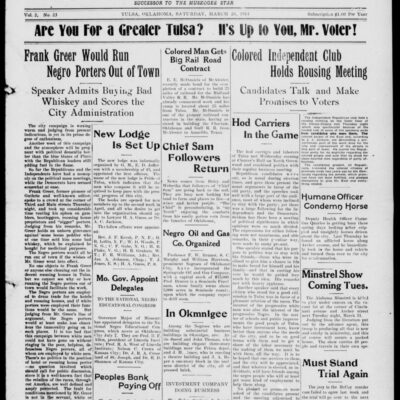
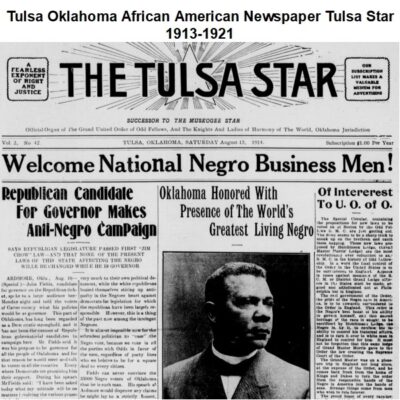
Tulsa Oklahoma African American Newspaper Tulsa Star 1913-1921
$9.90 Add to Cart -
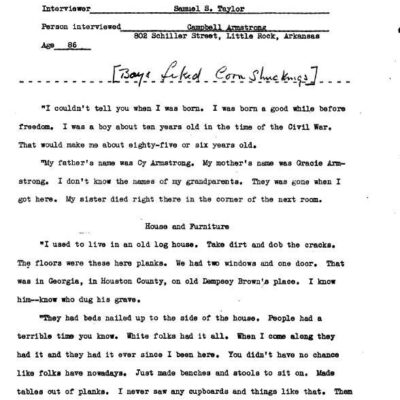
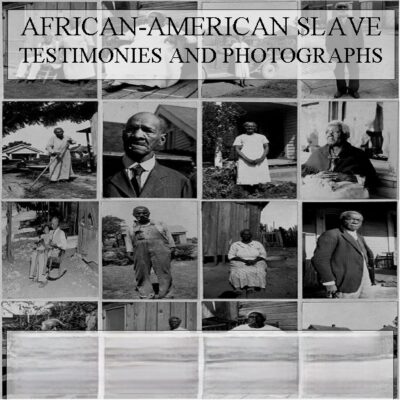
African American Slave Testimonies and Photographs
$19.50 Add to Cart -
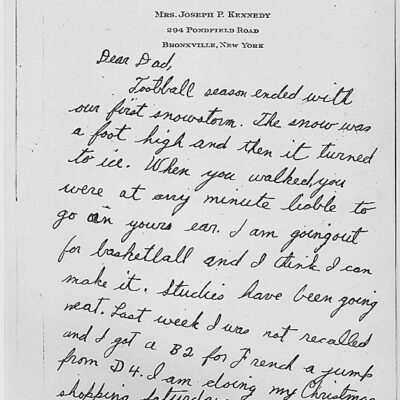
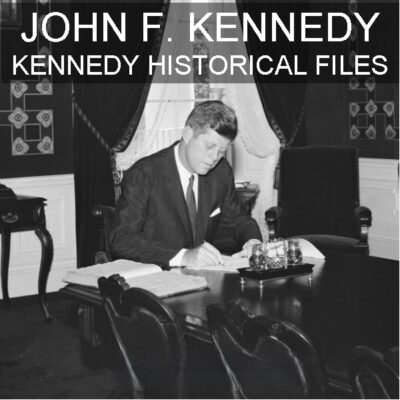
John F Kennedy – Jacqueline Kennedy Historical Files White House Files-FBI-Secret Service
$19.50 Add to Cart -
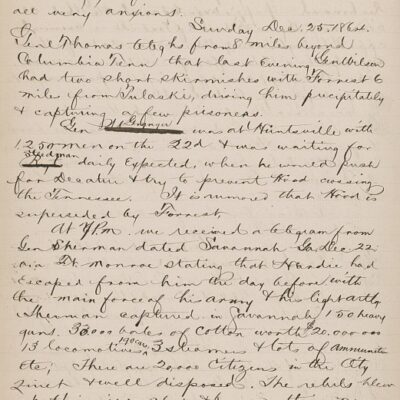
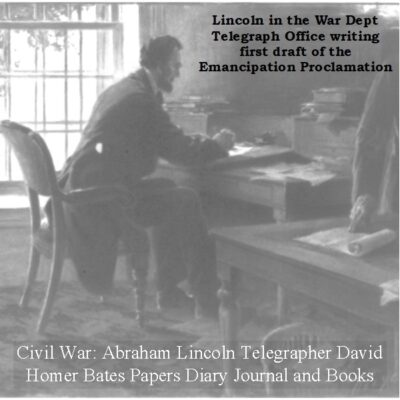
Abraham Lincoln’s Telegrapher David Homer Bates: Papers, Diary, and Books
$19.50 Add to Cart